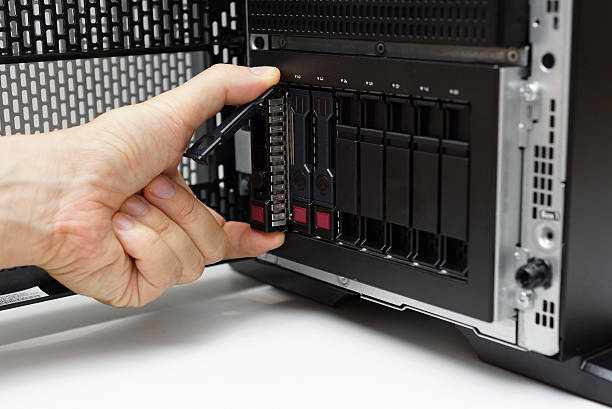In today's data-driven world, the speed of data transfers can significantly impact the efficiency and productivity of an organization. Network Attached Storage (NAS) devices are pivotal in managing and storing data, and choosing a NAS with high data transfer speeds can make a substantial difference. This article explores the best NAS options for achieving fast data transfers, focusing on key factors such as hardware specifications, network connectivity, and advanced features.
Understanding the Importance of Data Transfer Speed
Data transfer speed is crucial for various applications, from everyday file sharing to complex data-intensive tasks like video editing and large-scale data analysis. High-speed data transfers enhance the efficiency of these tasks, reduce wait times, and improve overall user experience. For businesses and power users, investing in a NAS that supports fast data transfers can lead to noticeable gains in productivity and operational efficiency.
Key Hardware Features for High-Speed Transfers
Several hardware features play a significant role in determining the data transfer speeds of a NAS device. One of the most critical factors is the type of storage media used. Solid State Drives (SSDs) generally offer faster data transfer rates compared to traditional Hard Disk Drives (HDDs). Therefore, NAS devices equipped with SSDs, or those that support SSD caching, tend to provide superior performance.
Another essential hardware consideration is the processor. A powerful multi-core processor in a NAS can handle multiple simultaneous data transfers more efficiently. Look for NAS devices with high-performance CPUs that can manage heavy workloads and maintain high-speed data transfers under load.
RAM capacity also affects data transfer performance. Adequate RAM ensures smooth operation, especially when multiple users access the NAS simultaneously or when handling large files. A NAS with sufficient memory can buffer data more effectively, leading to faster access and transfer speeds.
Network Connectivity and Protocols
Network connectivity is a vital component of data transfer speed. The network interface of a NAS device determines the speed at which data can be transmitted over the network. Modern NAS devices often feature Gigabit Ethernet ports, which provide speeds up to 1 Gbps. For even faster data transfers, consider NAS devices with 10 Gigabit Ethernet (10GbE) ports, which offer speeds up to 10 Gbps.
Additionally, the use of network protocols can influence transfer speeds. NAS devices that support advanced protocols such as iSCSI (Internet Small Computer Systems Interface) and NFS (Network File System) can provide faster data access and transfer compared to traditional protocols. These protocols are designed for high-speed data transfers and are commonly used in environments requiring rapid data access.
SSD Caching and RAID Configurations
SSD caching is a feature that can significantly enhance data transfer speeds in NAS devices. This technology uses SSDs as a cache for frequently accessed data, allowing faster read and write operations compared to using HDDs alone. A NAS device with SSD caching can deliver improved performance by accelerating access to high-demand files and applications.
RAID (Redundant Array of Independent Disks) configurations also impact data transfer speeds. RAID levels such as RAID 0 (striping) distribute data across multiple drives, which can enhance read and write speeds. However, RAID 0 does not provide redundancy, so it’s important to balance performance with data protection needs. For a combination of speed and redundancy, RAID 5 or RAID 6 are often preferred, as they offer data protection while still delivering reasonable performance gains.
Top NAS Devices for Fast Data Transfers
Several NAS devices stand out for their exceptional data transfer speeds. For instance, high-end models from brands like Synology and QNAP are known for their performance capabilities. The Synology DS1821+ and the QNAP TS-h1683XU-RP are examples of NAS devices that offer powerful processors, ample RAM, and 10GbE network interfaces, making them suitable for environments where speed is a critical factor.
Another notable option is the Asustor AS5304T, which combines a quad-core processor with dual 2.5GbE ports and support for SSD caching. This NAS device is designed to handle high-speed data transfers efficiently, making it a great choice for users who need rapid access to large files.
Conclusion
Selecting the best NAS system for fast data transfers involves considering several factors, including hardware specifications, network connectivity, and advanced features like SSD caching and RAID configurations. By focusing on these elements, you can choose a NAS device that meets your performance needs and enhances your data management capabilities. Investing in a high-speed NAS not only improves data access and transfer times but also boosts overall productivity and efficiency.





Comments